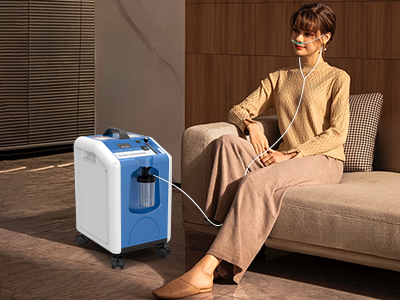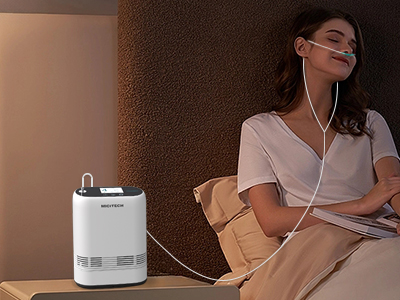27 Nov 2023
Oxygen concentrator pserve as lifelines for individuals requiring supplemental oxygen, providing a continuous flow of oxygen to support respiratory function.

Stationary Oxygen Concentrators
A. Functionality and Design Stationary concentrators are larger, robust units designed for home use, delivering continuous oxygen flow and equipped with advanced filtration systems.
B. Power Requirements and Usage They rely on a continuous power source, typically requiring a standard electrical outlet, limiting their mobility and usage primarily to indoor settings.
Portable Oxygen Concentrators
A. Portability and Mobility Features Portable concentrators are compact, lightweight devices designed for mobility, allowing users to travel and engage in activities outside their homes.
B. Battery Options and Versatility They operate on rechargeable batteries, offering flexibility by enabling usage during travel, outdoor activities, and situations where a power outlet is unavailable.

Oxygen Delivery and Flow
A. Continuous vs. Pulse Flow Delivery Stationary concentrators deliver a continuous flow of oxygen, suitable for users requiring constant oxygen supply, while portable models offer pulse dose delivery, releasing oxygen only when the user inhales.
B. Suitability for Different Oxygen Needs Stationary units cater to higher oxygen needs and constant usage, whereas portables are adaptable for varying oxygen requirements, adjusting delivery based on activity levels.
Size and Weight Comparison
A. Stationary Concentrator Size and Portability Stationary models are bulkier, heavier, and less portable due to their size, suitable for stable home environments but impractical for travel.
B. Lightweight Design of Portable Concentrators Portables are designed to be lightweight and compact, facilitating ease of transportation and allowing users to maintain an active lifestyle.
Use Cases and Environments
A. Home-based Applications for Stationary Models Stationary concentrators are ideal for homebound individuals, offering consistent oxygen supply without the need for frequent mobility.
B. Travel and Active Lifestyles with Portables Portable units cater to individuals seeking mobility, enabling travel, outdoor activities, and maintaining independence beyond the confines of home.
Maintenance and Care
A. Maintenance Needs for Stationary Units Stationary concentrators typically require regular maintenance, including filter changes and professional servicing, ensuring optimal performance.
B. Care and Cleaning of Portable Devices Portables often require simpler maintenance routines, such as regular cleaning and battery management, to uphold their functionality.
Cost Considerations and Accessibility
A. Initial Investment for Stationary vs. Portable Stationary concentrators often require a higher initial investment due to their advanced features, while portables offer affordability with fewer features.
B. Accessibility and Insurance Coverage Accessibility to both types may vary based on insurance coverage, with portable units gaining popularity due to their versatility and coverage options.
Understanding the distinctions between stationary and portable oxygen concentrators is crucial for individuals requiring oxygen therapy, aiding in selecting the most suitable option aligning with their lifestyle and oxygen needs
Keywords: oxygen concentrator
Originally published 27 Nov 2023, updated 27 Nov 2023.